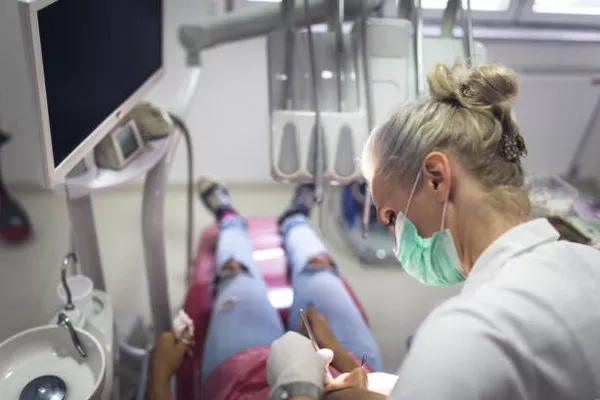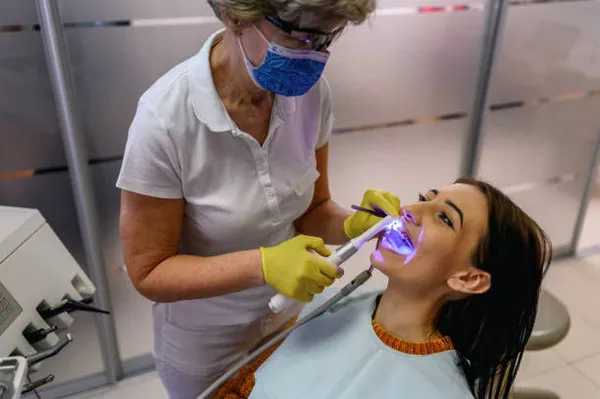Dental implants have revolutionized the field of dentistry by providing a robust solution for replacing missing teeth. Whether you’re missing one tooth, several teeth, or all of your teeth, dental implants offer versatile options to restore your smile and improve oral function. This comprehensive guide explores the possibilities and considerations when it comes to replacing teeth with dental implants.
Addressing the “How Many” Question
Single Tooth Replacement
For individuals missing a single tooth, a dental implant is often the treatment of choice. This involves surgically placing an implant post into the jawbone, which serves as a sturdy foundation for a custom-made dental crown.
Procedure Overview: The process begins with a consultation where your dentist evaluates your oral health and determines if you’re a candidate for a single dental implant. After the implant integrates with the jawbone through a process called osseointegration, an abutment is placed on the implant to support the final crown.
Benefits: Single tooth implants offer several benefits, including preserving adjacent teeth, restoring natural appearance, and providing long-term durability.
Multiple Tooth Replacement
When multiple adjacent teeth are missing, implant-supported bridges or partial dentures are viable options. This approach uses multiple implants strategically placed in the jawbone to support a bridge or partial denture.
Implant-Supported Bridge: Several implants are placed to support a dental bridge that spans the gap left by missing teeth. This option avoids the need for altering adjacent healthy teeth, as is necessary with traditional bridges.
Benefits: Implant-supported bridges restore chewing function, prevent bone loss, and provide stability and longevity comparable to natural teeth.
Full Arch Replacement
For patients missing all teeth in an arch (upper or lower jaw), full arch dental implants offer a comprehensive solution.
Full Arch Implant-Supported Dentures: Also known as implant-supported overdentures or All-on-4 implants, this technique involves placing a series of implants (usually four per arch) to support a full denture.
Procedure Overview: The implants are strategically placed to maximize support and stability for the denture. This option provides a secure fit without the need for adhesives and restores both function and aesthetics.
Benefits: Full arch implants restore facial structure, improve speech, enhance chewing ability, and prevent further bone loss.
Factors Influencing the Number
Bone Density
The density and volume of the jawbone play a crucial role in determining the number of implants that can be successfully placed.
Bone Quality: Adequate bone density ensures sufficient support and stability for implants. In cases where bone density is compromised, bone grafting procedures may be necessary to augment the jawbone.
Tooth Loss Location
The location of missing teeth influences the number and placement of implants required.
Back Teeth: Implants placed in the posterior (back) of the mouth often require more robust support due to greater chewing forces. Your dentist will consider this factor when planning implant placement.
Individual Needs and Goals
Each patient’s case is unique, and the number of implants required is determined based on individual oral health needs and treatment goals.
Customized Treatment Plan: Your dentist will conduct a comprehensive evaluation to assess factors such as oral health, jawbone structure, and aesthetic preferences before recommending a personalized treatment plan.
See Also: How Much Does A Crown For A Dental Implant Cost
Different Implant Options for Multiple Teeth
Implant-Supported Bridge
An implant-supported bridge is an effective solution for replacing several adjacent missing teeth without affecting healthy neighboring teeth.
Procedure: Multiple implants are placed to support a bridge that spans the gap left by missing teeth. The bridge is custom-made to blend seamlessly with your natural teeth.
Advantages: This option restores chewing function, prevents bone loss, and offers stability comparable to natural teeth.
All-on-4 Implants
The All-on-4 dental implant technique provides a streamlined approach to full arch replacement, using four strategically placed implants per arch.
Procedure: Four implants are placed at specific angles to maximize contact with available bone and provide sufficient support for a complete denture.
Benefits: All-on-4 implants offer reduced treatment time, minimal bone grafting, and immediate restoration of function and aesthetics.
Full Arch Implant-Supported Dentures
Full arch implant-supported dentures are secured in place by a series of implants placed throughout the jawbone.
Procedure: Multiple implants (usually six or more per arch) are strategically positioned to anchor a custom-made denture. This option provides superior stability and function compared to traditional removable dentures.
Advantages: Improved comfort, enhanced chewing ability, prevention of bone loss, and a natural-looking smile are among the benefits of full arch implant-supported dentures.
Considerations for Each Option
Cost
The cost of dental implants varies depending on factors such as the number of implants required, additional procedures (like bone grafting), and geographic location.
General Cost Range: On average, a single dental implant can cost between $3,000 to $4,500. Full arch implants or complex cases may incur higher costs.
Procedure Complexity
The complexity of the surgical procedures involved can impact treatment time, recovery period, and overall success.
Bone Grafting: Patients with inadequate jawbone structure may require bone grafting procedures to augment bone volume and density before implant placement.
Recovery Time
Recovery time varies depending on the number of implants placed, the need for additional procedures, and individual healing capabilities.
Healing Process: After implant placement, osseointegration typically takes several months. Patients are advised to follow post-operative care instructions to promote healing and minimize complications.
Emphasizing Professional Consultation
A thorough dental examination is essential to evaluate oral health, discuss treatment options, and develop a personalized treatment plan.
Diagnostic Tools: X-rays, CT scans, and intraoral imaging help assess bone structure and plan implant placement accurately.
Customized Treatment Plan
The number of implants and the appropriate treatment approach are determined based on individual needs, oral health status, and aesthetic goals.
Patient Involvement: Patients are encouraged to actively participate in treatment discussions, ask questions, and express concerns to ensure informed decision-making.
Open Communication
Open communication between patients and their dental care team fosters trust and ensures a positive treatment experience.
Patient Education: Dentists provide detailed information about each treatment option, expected outcomes, and potential risks to empower patients to make well-informed decisions.
Conclusion
Dental implants offer versatile solutions for replacing missing teeth, ranging from single tooth replacements to full arch restorations. By understanding the options available and consulting with a qualified dental professional, you can embark on a journey towards restoring your smile, improving oral function, and enhancing overall quality of life. If you’re considering dental implants, schedule a consultation with your dentist to explore the best treatment plan tailored to your unique needs and goals.
You Might Be Interested In






























